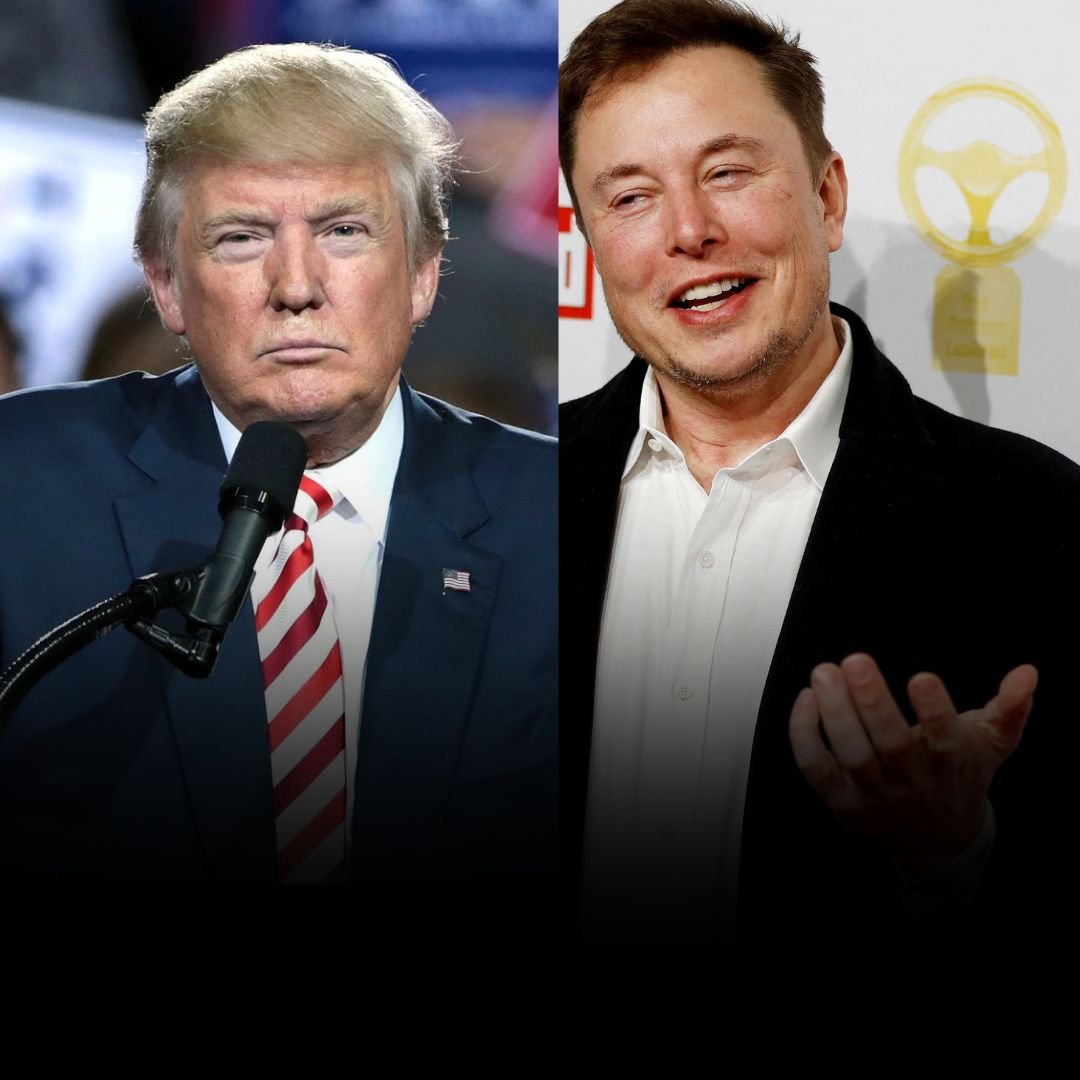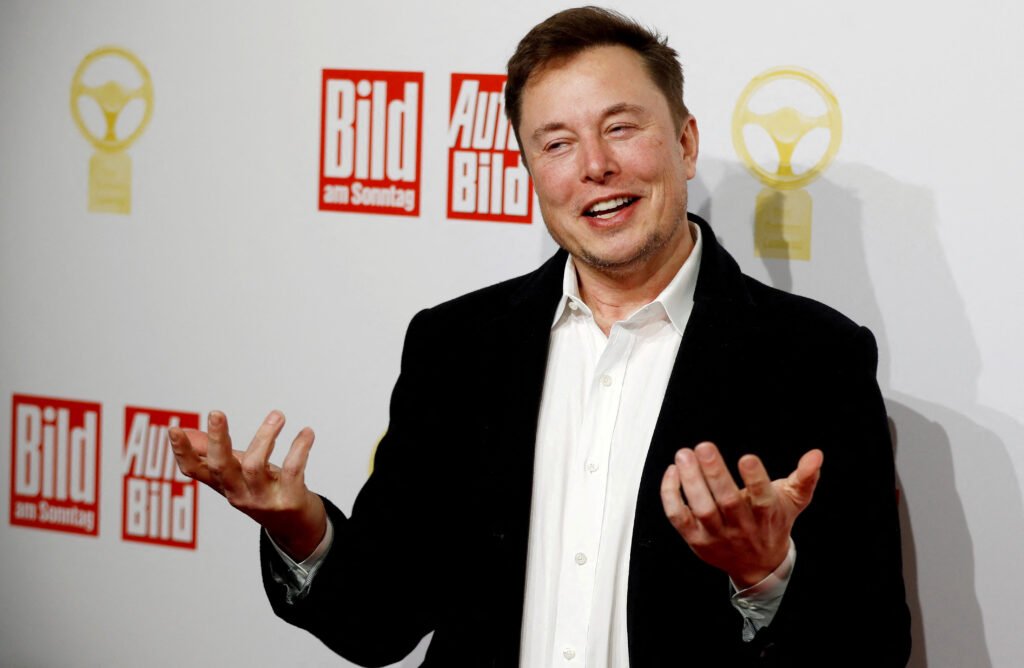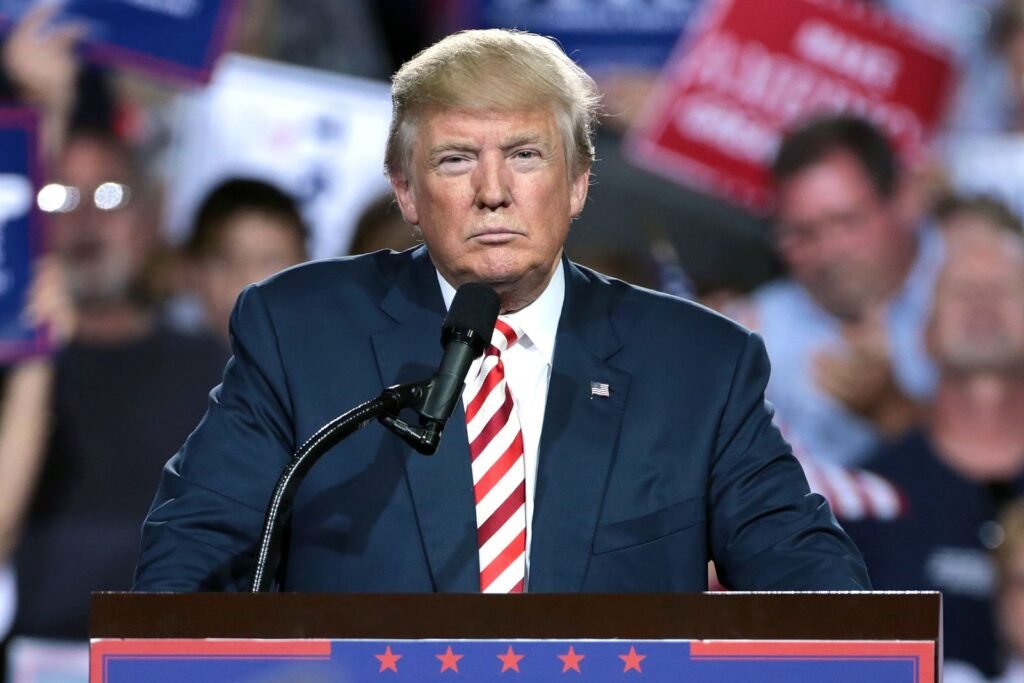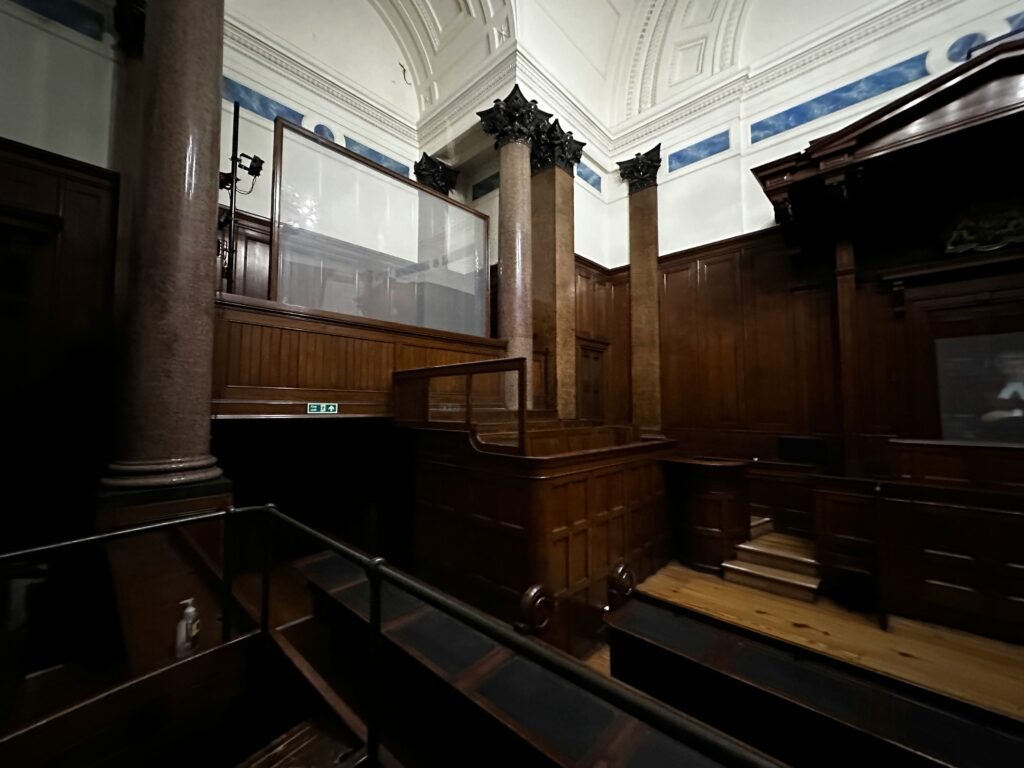Business
Parents need child care, and more are finding it at work on November 11, 2023 at 11:00 am Business News | The Hill

Story at a glance
As the child care crisis rages on, more companies are trying to help their workers with children with on-site child care.
Data from the group The Best Place for Working Parents found that about 13 percent of companies in their network offer on-site child care of some sort.
But offering on-site child care is tricky and expensive.
Like millions of other parents, Emily Hobey drops her son at day care before she heads to work every morning.
But what makes her mornings different from other parents’ mornings, is she gets to leave her one-and-half-year-old in a day care center run by her employer, Whirlpool.
The day care, called the Eddy, is located at the company’s global headquarters in Benton Harbor, Mich.—a five-minute drive away from her office at the company’s North America Headquarters building.
“Every day there is a safe environment waiting for him with great teachers,” said Hobey. “And we can really depend on that.”
A small but growing number of workplaces are offering on-site day care for their employees, according to data from network The Best Place for Working Parents, which encompasses over 600 businesses of varying sizes and services.
The organization has tracked how many businesses within its network offer on-site child care since right before the pandemic. In 2020, the Best Place for Working Parents found that 8.5 percent of those companies offered on-site child care.
That number grew to 11.9 percent in 2021, fell slightly to 11.4 percent in 2022 and climbed to 13.9 percent this year, a network spokesperson told The Hill in an email.
Access to child care plays a major role in whether parents work in or outside the home.
This is particularly true for women, research shows.
A 2022 survey from McKinsey & Company found that 45 percent of mothers with children age 5 or younger “who left the workforce during the COVID-19 pandemic cited child care as a major reason for their departure.”Only 14 percent of fathers said the same.
And 24 percent of mothers with children 5 years old or younger said they considered reducing their work hours or switching to part-time work because of child care.
Like Whirlpool, many workplaces offer on-site day care to help make their companies more attractive to employees.
Research also shows that when companies offer on-site child care, workers are happier at their job and are less likely to leave.
This has been the case at clothing company Patagonia, which has offered on-site child care since 1983 at its corporate headquarters in Ventura, Calif., and at its distribution center in Reno, Nev., according to the company’s website.
Hilary Dessouky, general counsel at Patagonia, told The Hill that the companies paid leave policies and on-site child care have resulted in almost 100 percent of mother’s returning to work after maternity leave.
“Parent-friendly policies have been a hallmark of our culture that has led to a nearly 50/50 gender balance at all levels of the company, more women in leadership positions and it improves our ability to attract and retain to talent,” Dessouky said in a statement to The Hill.
Former Patagonia CFO Rose Marcario wrote in a piece for Fast Company in 2016 that turnover rate for employees at their Ventura and Reno locations was 25 percent less than for their general employee population.
But creating a safe place for employees’ children is complicated.
“A lot of times the conversation starts with onsite child care and that is because for better or worse it is still kind of viewed as the gold standard of employer support around child care,” said Aaron Merchen, senior director at the U.S. Chamber of Commerce Foundation.
But constructing an onsite center and then hiring child care workers can be expensive for employers. Employers must also consider insurance and local laws when thinking about providing onsite child care, according to Merchen. One example may be zoning restrictions that don’t allow for such a facility, he suggested.
Hollis Wells Silverman, who runs the Washington, D.C.-based restaurant group Eastern Point Collective, has been toying with the idea of creating a day care for her employees.
One of her biggest concerns, though, is cost. Many companies that have successfully created onsite child care centers like Patagonia, Toyota, Whirlpool, Bank of America, Vermeer, Medtronic and soon Walmart all have “more flexibility with their margins,” she said.
Silverman added that typically for every dollar a restaurant earns only five to 10 cents are profits.
On top of that, restaurant workers usually need child care past six o’clock, when the hourly wage of a child care provider might go up.
“There are a lot of challenges, and I would really love to figure it out,” Silverman said.
In the meantime, though, she told The Hill that her restaurant employees are free to bring their children to work if they cannot secure outside child care.
Business, Changing America, Education, Enrichment, Bank of America, child care crisis, on-site child care, Patagonia, The Best Place for Working Parents, Walmart Story at a glance Like millions of other parents, Emily Hobey drops her son at day care before she heads to work every morning. But what makes her mornings different from other parents’ mornings, is she gets to leave her one-and-half-year-old in a day care center run by her employer, Whirlpool. The day care, called the Eddy, is located at the company’s…
Business
Pros and Cons of the Big Beautiful Bill

The “Big Beautiful Bill” (officially the One Big Beautiful Bill Act) is a sweeping tax and spending package passed in July 2025. It makes permanent many Trump-era tax cuts, introduces new tax breaks for working Americans, and enacts deep cuts to federal safety-net programs. The bill also increases spending on border security and defense, while rolling back clean energy incentives and tightening requirements for social programs.

Pros
1. Tax Relief for Middle and Working-Class Families
- Makes the 2017 Trump tax cuts permanent, preventing a scheduled tax hike for many Americans.
- Introduces new tax breaks: no federal income tax on tips and overtime pay (for incomes under $150,000, with limits).
- Doubles the Child Tax Credit to $2,500 per child through 2028.
- Temporarily raises the SALT (state and local tax) deduction cap to $40,000.
- Creates “Trump Accounts”: tax-exempt savings accounts for newborns.
2. Support for Small Businesses and Economic Growth
- Makes the small business deduction permanent, supporting Main Street businesses.
- Expands expensing for investment in short-lived assets and domestic R&D, which is considered pro-growth.
3. Increased Spending on Security and Infrastructure
- Allocates $175 billion for border security and $160 billion for defense, the highest peacetime military budget in U.S. history.
- Provides $12.5 billion for air traffic control modernization.
4. Simplification and Fairness in the Tax Code
- Expands the Earned Income Tax Credit (EITC) and raises marginal rates on individuals earning over $400,000.
- Closes various deductions and loopholes, especially those benefiting private equity and multinational corporations.

Cons
1. Deep Cuts to Social Safety Net Programs
- Cuts Medicaid by approximately $930 billion and imposes new work requirements, which could leave millions without health insurance.
- Tightens eligibility and work requirements for SNAP (food assistance), potentially removing benefits from many low-income families.
- Rolls back student loan forgiveness and repeals Biden-era subsidies.
2. Increases the Federal Deficit
- The bill is projected to add $3.3–4 trillion to the federal deficit over 10 years.
- Critics argue that the combination of tax cuts and increased spending is fiscally irresponsible.
3. Benefits Skewed Toward the Wealthy
- The largest income gains go to affluent Americans, with top earners seeing significant after-tax increases.
- Critics describe the bill as the largest upward transfer of wealth in recent U.S. history.
4. Rollback of Clean Energy and Climate Incentives
- Eliminates tax credits for electric vehicles and solar energy by the end of 2025.
- Imposes stricter requirements for renewable energy developers, which could lead to job losses and higher electricity costs.

5. Potential Harm to Healthcare and Rural Hospitals
- Reduces funding for hospitals serving Medicaid recipients, increasing uncompensated care costs and threatening rural healthcare access.
- Tightens verification for federal premium subsidies under the Affordable Care Act, risking coverage for some middle-income Americans.
6. Public and Political Backlash
- The bill is unpopular in public polls and is seen as a political risk for its supporters.
- Critics warn it will widen the gap between rich and poor and reverse progress on alternative energy and healthcare.
Summary Table
| Pros | Cons |
|---|---|
| Permanent middle-class tax cuts | Deep Medicaid and SNAP cuts |
| No tax on tips/overtime for most workers | Millions may lose health insurance |
| Doubled Child Tax Credit | Adds $3.3–4T to deficit |
| Small business support | Benefits skewed to wealthy |
| Increased border/defense spending | Clean energy incentives eliminated |
| Simplifies some tax provisions | Threatens rural hospitals |
| Public backlash, political risk |
In summary:
The Big Beautiful Bill delivers significant tax relief and new benefits for many working and middle-class Americans, but it does so at the cost of deep cuts to social programs, a higher federal deficit, and reduced support for clean energy and healthcare. The bill is highly polarizing, with supporters touting its pro-growth and pro-family provisions, while critics warn of increased inequality and harm to vulnerable populations.
Business
Trump Threatens to ‘Take a Look’ at Deporting Elon Musk Amid Explosive Feud

The escalating conflict between President Donald Trump and Elon Musk reached a new peak this week, as Trump publicly suggested he would consider deporting the billionaire entrepreneur in response to Musk’s fierce criticism of the president’s signature tax and spending bill.

“I don’t know, we’ll have to take a look,” Trump told reporters on Tuesday when asked directly if he would deport Musk, who was born in South Africa but has been a U.S. citizen since 2002.
This threat followed a late-night post on Trump’s Truth Social platform, where he accused Musk of being the largest recipient of government subsidies in U.S. history. Trump claimed that without these supports, Musk “would likely have to shut down operations and return to South Africa,” and that ending such subsidies would mean “no more rocket launches, satellites, or electric vehicle production, and our nation would save a FORTUNE”.
Trump also invoked the Department of Government Efficiency (DOGE)—a federal agency Musk previously led—as a potential tool to scrutinize Musk’s companies. “We might have to put DOGE on Elon. You know what DOGE is? The DOGE is the monster that might have to go back and eat Elon,” Trump remarked, further intensifying the feud.

Background to the Feud
The rupture comes after Musk’s repeated attacks on Trump’s so-called “Big, Beautiful Bill,” a comprehensive spending and tax reform proposal that Musk has labeled a “disgusting abomination” and a threat to the nation’s fiscal health. Musk, once a Trump ally who contributed heavily to his election campaign and served as a government advisor, has called for the formation of a new political party, claiming the bill exposes the need for an alternative to the current two-party system.
In response, Trump’s allies have amplified questions about Musk’s citizenship and immigration history, with some suggesting an investigation into his naturalization process. However, legal experts note that deporting a naturalized U.S. citizen like Musk would be extremely difficult. The only path would involve denaturalization—a rare and complex legal process requiring proof of intentional fraud during the citizenship application, a standard typically reserved for the most egregious cases.
Political Fallout
Musk’s criticism has rattled some Republican lawmakers, who fear the feud could undermine their party’s unity ahead of the 2026 midterm elections. Meanwhile, Musk has doubled down on his opposition, warning he will support primary challengers against Republicans who back Trump’s bill.
Key Points:
- Trump has publicly threatened to “take a look” at deporting Elon Musk in retaliation for Musk’s opposition to his legislative agenda.
- Legal experts say actual deportation is highly unlikely due to the stringent requirements for denaturalizing a U.S. citizen.
- The feud marks a dramatic reversal from the pair’s earlier alliance, with both men now trading barbs over social media and in public statements.
As the dispute continues, it has become a flashpoint in the broader debate over government spending, corporate subsidies, and political loyalty at the highest levels of American power.
Business
Diddy Faces Life Sentence as Jury Deliberates

Sean “Diddy” Combs, the influential music mogul and entrepreneur, is facing the possibility of spending the rest of his life behind bars as a New York federal jury continues deliberations in his high-profile sex trafficking and racketeering trial.

After more than five hours of deliberation on Monday, the 12-member jury—composed of eight men and four women—had not reached a verdict and is set to resume discussions today. The panel is tasked with deciding whether prosecutors have proven beyond a reasonable doubt that Combs orchestrated a criminal enterprise that trafficked women for sex and engaged in other serious crimes over a period spanning nearly two decades.
Prosecutors allege that Combs, 55, used his wealth, celebrity, and network of employees to coerce and intimidate two former romantic partners—singer Cassie Ventura and another woman identified as “Jane”—into participating in what were described as drug-fueled “freak offs,” involving commercial sex acts with male escorts while Combs watched or filmed. They further claim he maintained control through threats of violence, kidnapping, and arson, and that he used his business empire as a front for these illicit activities.
Combs has pleaded not guilty to all charges, which include:
- One count of racketeering conspiracy
- Two counts of sex trafficking by force, fraud, or coercion
- Two counts of transportation for the purpose of prostitution

If convicted of the most serious charges, Combs faces a mandatory minimum sentence of 15 years and a maximum of life in prison. The racketeering charge alone could result in a life sentence if the jury finds he committed at least two of the eight underlying crimes alleged by prosecutors, including sex trafficking, kidnapping, bribery, and narcotics distribution.
The defense argues that the government is unfairly criminalizing Combs’ private sexual conduct, characterizing the events as consensual and part of a swinger lifestyle rather than criminal acts. Combs chose not to testify in his own defense, with his legal team focusing on cross-examining dozens of prosecution witnesses, including former employees who testified under immunity.
Deliberations have not been without drama. The jury sent a note to Judge Arun Subramanian expressing concern that one juror was struggling to follow instructions, prompting the judge to remind all members of their duty to deliberate fairly and according to the law. The panel also sought clarification on the legal standards surrounding narcotics distribution, a key element in the racketeering charge, which the judge is expected to address today.
As the world watches, Combs’ fate now rests in the hands of the jury. There is no set timeline for a verdict, and the deliberations could continue for several days. If acquitted, Combs would be released immediately; if convicted, he could face a life sentence, marking a dramatic fall for one of hip-hop’s most prominent figures.

 Advice2 weeks ago
Advice2 weeks agoWhat SXSW 2025 Filmmakers Want Every New Director to Know

 Film Industry2 weeks ago
Film Industry2 weeks agoFilming Yourself and Look Cinematic

 Politics3 weeks ago
Politics3 weeks agoBolanle Newsroom Brief: Israel Strikes Iran’s Nuclear Sites — What It Means for the World

 News5 days ago
News5 days agoFather Leaps Overboard to Save Daughter on Disney Dream Cruise

 Advice1 week ago
Advice1 week agoWhy 20% of Us Are Always Late

 Health5 days ago
Health5 days agoMcCullough Alleges Government Hid COVID Vaccine Side Effects

 Entertainment3 weeks ago
Entertainment3 weeks agoThe Hidden Reality Behind Victoria’s Secret

 Advice1 week ago
Advice1 week agoHow to Find Your Voice as a Filmmaker




























